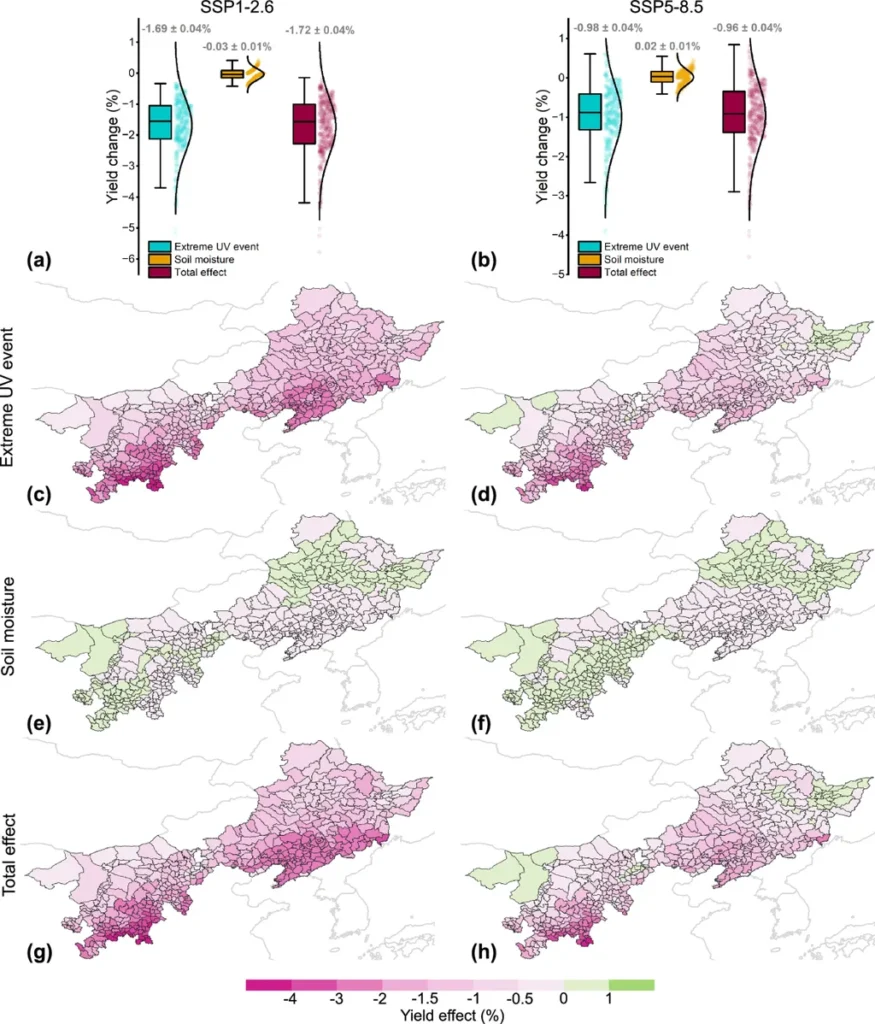In the heart of China’s agricultural innovation, a groundbreaking study led by ZHANG Yan from the Institute of Agricultural Economic and Information at the Henan Academy of Agricultural Sciences is revolutionizing how we measure soil moisture. The research, published in ‘Guan’gai paishui xuebao’ (translated to ‘Journal of Glaciology and Geocryology’), is not just about improving agricultural practices but also holds significant promise for the energy sector, particularly in optimizing water usage and enhancing crop yields.
The study focuses on the early growth stage of maize, a critical period marked by substantial variation in canopy coverage. Traditional methods of measuring topsoil water content, which is vital for crop growth and yield, are often labor-intensive and time-consuming. Enter UAV-based remote sensing, a technology that offers rapid, high-resolution in situ measurements. However, the accuracy of these measurements has been a challenge until now.
ZHANG Yan and her team conducted an experiment in a maize field, simultaneously collecting UAV imageries and ground-truth measurements. They applied a threshold method to remove the influence of soil background information and calculate vegetation coverage. Spectral and texture features were extracted, and vegetation coverage was integrated into different data combination patterns. The team then used three regression methods—random forest regression, ridge regression, and partial least squares regression—to construct the inversion model for estimating topsoil water content.
The results were striking. The effect of background information removal on model accuracy varied with the regression method and the data extracted from sensors. “Inversion accuracy improved after soil background information removal for RGB sensors but decreased for TIR sensors,” ZHANG Yan explained. The combination of visible and thermal infrared data significantly improved model accuracy, providing richer information and improving robustness. Incorporating vegetation coverage also enhanced the accuracy of the predicted topsoil water content, both with and without background information removal.
The implications of this research are far-reaching. For the energy sector, precise soil moisture measurement is crucial for optimizing irrigation systems, reducing water waste, and improving energy efficiency. As water scarcity becomes an increasingly pressing issue, technologies that enable more efficient water use will be invaluable.
Looking ahead, this research could shape future developments in agricultural technology and remote sensing. By identifying the optimal combinations of data types, features, and modeling approaches, ZHANG Yan and her team have paved the way for more accurate and efficient soil moisture measurement. This could lead to advancements in precision agriculture, where data-driven decisions can enhance crop yields and sustainability.
In the words of ZHANG Yan, “Our results show that different data combinations and inclusion of vegetation coverage had varying effects on the accuracy of UAV-based methods for topsoil water content estimation. We screened optimal combinations and methods to increase the accuracy of the method for estimating topsoil water content in the early maize growing stage.”
As we stand on the brink of a new era in agricultural technology, this research serves as a beacon of innovation, guiding us towards a future where technology and agriculture converge to create sustainable and efficient solutions. The journey has just begun, and the potential is immense.

